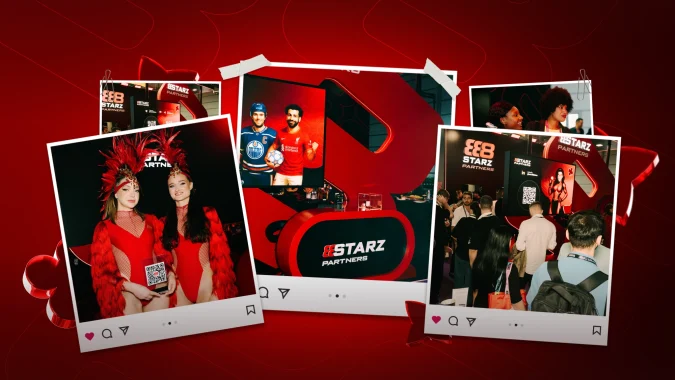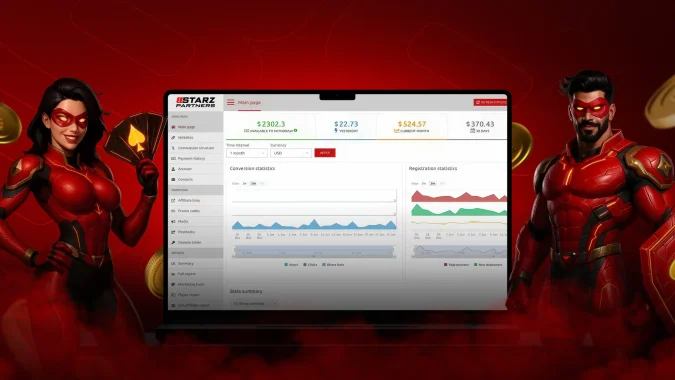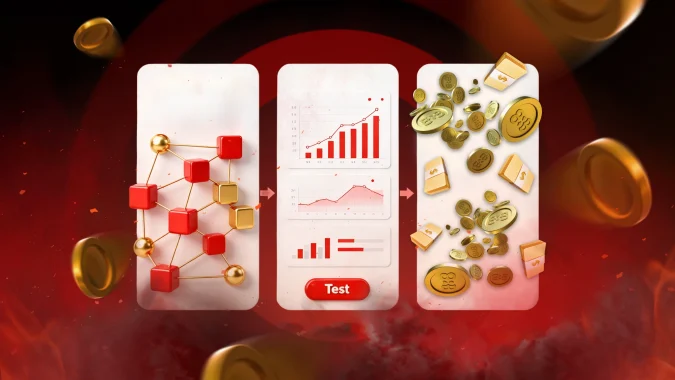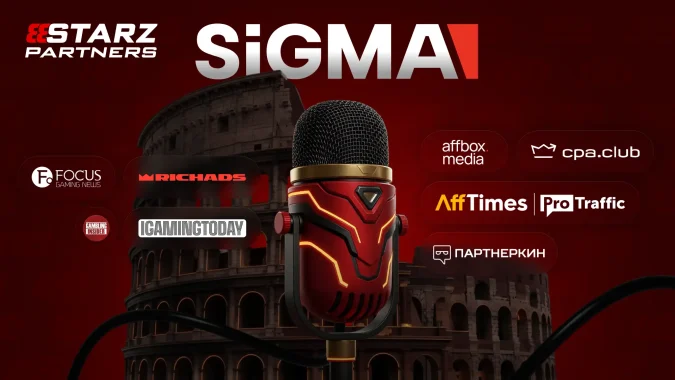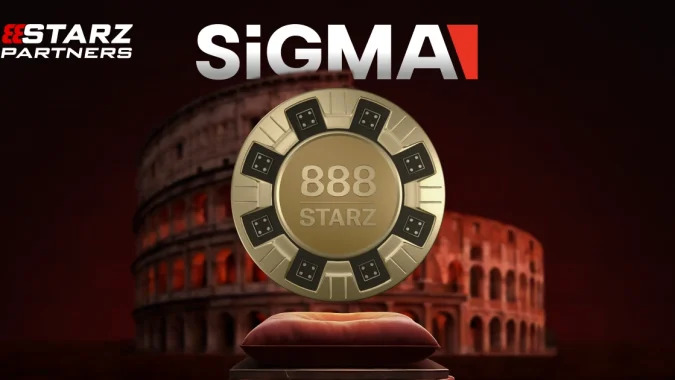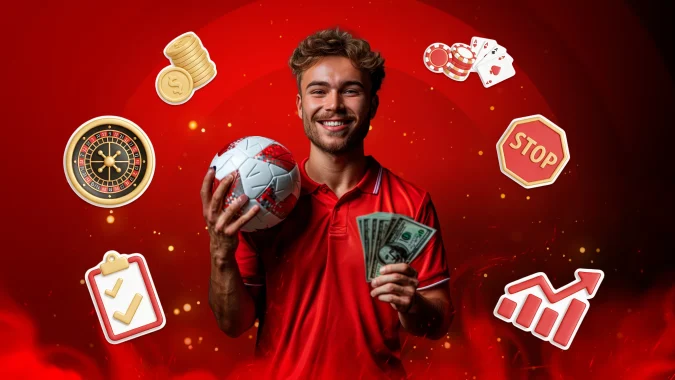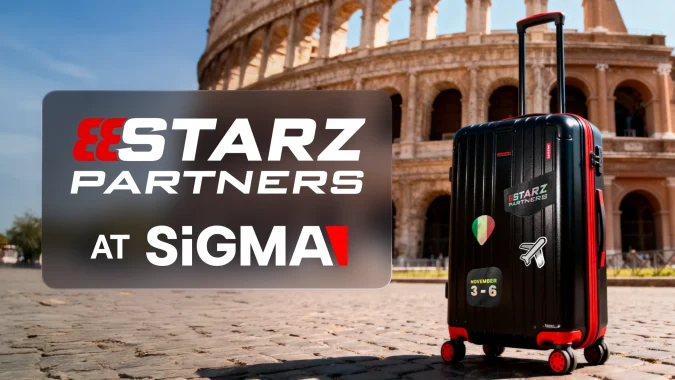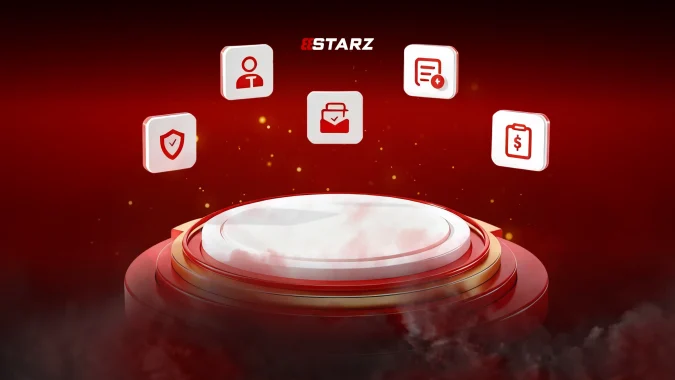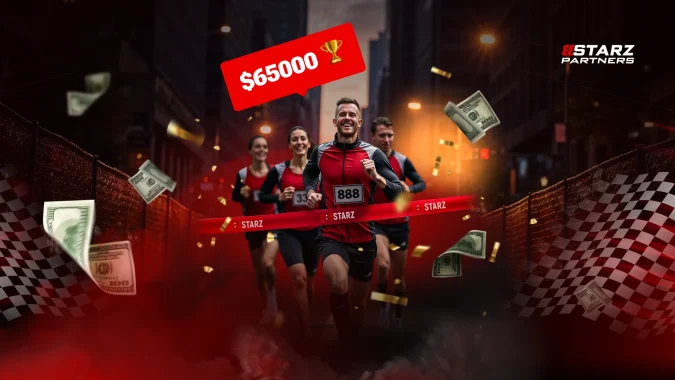Esports vs Sports in Affiliate Marketing: Which Converts Better in 2025

- What are Esports and traditional sports in the affiliate marketing
- Esports: definition, platforms, popular titles
- Traditional sports: established channels and brands
- Audience demographics and psychographics
- Age, interests, and consumption patterns
- Key differences in target audiences and behavior
- Regional variations and GEO preferences
- Conversion rates in 2025: Esports vs sports
- Affiliate funnel: lead quality and CPA rates
- Retention and LTV differences
- Channels used by affiliates in Esports vs sports
- Social media and streaming platforms
- SEO and content strategies
- Influencer Collaborations and Community Loyalty
- Which vertical converts better in 2025? Comparative insights
- Key takeaways for your affiliate strategy
- FAQ
The esports vs sports debate is no longer hypothetical. By mid-2025, both are mature, billion-dollar markets. This data-driven guide helps experienced affiliates decide where to profit right now. In this article from 888STARZ Partners, we will cover this topic in detail.
What are Esports and traditional sports in the affiliate marketing
Before comparing conversion rates, you need to understand that these are two different niches from an affiliate’s perspective in iGaming. The products, user behavior, and what makes a winning betting offer are fundamentally different.

Esports: definition, platforms, popular titles
For sports betting affiliate programs, Esports is a dynamic ecosystem of streaming platforms like Twitch and Kick, massive tournaments like the CS2 Majors and The International, and deeply engaged fan communities. Here, trust in an influencer converts far better than a traditional ad.
A key difference also lies in the competition. Esports often involve a higher degree of randomness and more in-game variables than traditional sports. This means less predictable outcomes, which translates into more attractive odds and a wider variety of betting markets for players—from “First Blood” in Dota 2 to “Pistol Round Winner” in Valorant. For affiliates, more betting options mean more engagement and more opportunities for conversion.
Below is a table of key esports disciplines and tournaments that generate the highest volume of bets. These are the “World Championships” in the world of esports, around which you should build your campaigns:
| Game (Discipline) | Key Tournaments | Frequency | Official Website / Hub |
| Counter-Strike 2 | The Majors (PGL, BLAST, etc.), BLAST Premier Series, IEM Katowice/Cologne | Majors: Twice a Year. BLAST/IEM: Multiple large events year-round | https://www.hltv.org/ |
| Dota 2 | The International (TI), Riyadh Masters | TI: Annual Grand Finale. Riyadh Masters: Annual (Summer) | https://www.dota2.com/esports |
| Valorant | Valorant Champions Tour (VCT), culminating in Valorant Champions | Champions: Annual Grand Finale VCT: Year-round league play | https://valorantesports.com/ |
| League of Legends | World Championship (Worlds), Mid-Season Invitational (MSI) | Worlds: Annual Grand Finale MSI: Annual (Mid-season) | https://lolesports.com/ |
Traditional sports: established channels and brands
Traditional Sports is a more predictable, event-driven market. It revolves around mega-events like the FIFA World Cup, UEFA Champions League, Copa America, or Copa Libertadores, with an audience that has trusted major media outlets and bookmaker brands for decades. While the hype here is immense, so is the competition in traffic auctions. So, the crucial factor for conversion here is the quality of the offer.
That’s why at 888STARZ Partners, we focus on providing some of the most competitive odds on the market for both traditional sports and esports. When you promote our brand, you’re promoting a platform where players genuinely get more value, leading to better retention for you.
Audience demographics and psychographics
To achieve real success, it is essential to understand that although both sports and esports bettors may be chasing an adrenaline rush, the source of that adrenaline and their key psychological drivers are in different niches. Understanding this is the key to creating a message that converts rather than being ignored.
Age, interests, and consumption patterns
At first glance, the audiences hardly overlap. An esports fan (aged 18–35) is a tech-savvy millennial or Gen Z whose interests include anime, cryptocurrency, and the latest gadgets. They consume content on demand and are skeptical of anything that resembles corporate advertising. On the other hand, sports fans (aged 25-65+) represent a much broader cross-section of the population with diverse interests ranging from cars to politics.
But to truly understand their consumption patterns, you need to dig deeper into their psychological profiles. Thus, the motivation of a traditional sports bettor is twofold. They are either an “Analyst” who derives intellectual satisfaction from “beating the system” using statistics and analysis, or a “Loyalist” for whom betting is an emotional act of supporting their favorite team.
An esports bettor’s motivation is rooted in the community. They are either a “Follower,” whose trust is completely devoted to a specific streamer, or a “Participant,” who plays the game themselves and places bets to immerse themselves more deeply in the process and feel part of the action.
Key differences in target audiences and behavior
Although there are some differences in the psychological attraction of the target audience, there are also many common aspects of contact between audiences in the context of behavioral psychology, fanaticism, commercial attraction, and even patriotism.
So, the profound psychological differences described above lead to entirely different behaviors and require partners to employ different conversion strategies. What works for the “Analyst” will be rejected by the “Follower.”
Here is a practical guide table for working with these different types of thinking:
| Strategy Element | Sports Bettor (The Analyst/Loyalist) | Esports Bettor (The Follower/Participant) |
| Creatives & Ad Copy | Use data, stats, and official logos. “Man City has won 8 of their last 10 home games.” Appeal to logic, expertise, and pride in the team, as well as Loyalists’ attraction to patriotism. | Use memes, influencer faces, and community slang. “Our boy [Streamer’s name] thinks this is the play. Are you with us?” Appeal to belonging, trust, and inside jokes. |
| Pre-Lander / Content | Create analytical articles, statistics, and match previews. Position yourself as a knowledgeable sports analyst. Pay attention to the important nuance that patriotism in esports among Loyalists is more commercial in nature—towards teams, games, or players. | Create stream highlight reels, gameplay guides, and exclusive content featuring the influencer. Position yourself as a helpful, value-adding member of the community. |
| Bonus & Offer Framing | Frame it as “Value,” “Advantage,” or “Insurance.” “Get a $200 Risk-Free Bet on 888sport – The Smartest Offer on the Market.” | Frame it as “Community Perk” or “Exclusive Access.” “Exclusive Bonus for [Streamer]’s Subs! Join the rest of us and get your reward on 888sport.” |
| Brand Persona | Be the trusted expert/analyst. Your tone should be confident, data-driven, and authoritative. | Be the helpful friend/insider. Your tone must be authentic, informal, and demonstrate that you are “one of them.” |
Regional variations and GEO preferences
GEO is one of the most critical decisions for a partner, and success here depends on choosing the right place to promote. Essentially, choosing GEO means selecting an offer.
A massive audience in the “black” market (China, most Middle Eastern countries, Singapore, North Korea) is useless. In contrast, a small but solvent audience in the “white” market (UK, Denmark, Italy, many US states) can bring results. For example, mature Tier-1 markets such as North America and Western Europe offer the highest ARPU and the fiercest competition. In the US, where the sports betting market is being legalized state by state, success requires huge budgets.
At the same time, in Europe, with its strict regulators such as the UKGC, affiliates have to compete not with bonuses but with the depth of their analytics and knowledge of local football leagues, as experienced European bettors are constantly looking for the best odds and value in betting.
However, the picture differs entirely in rapidly growing markets such as Latin America (LATAM) and Southeast Asia (SEA). Here, it’s all about volume. The huge passion for football in Brazil, which is now on the verge of fully legalising betting, creates a “gold rush” atmosphere for sports offers. At the same time, mobile esports dominates Southeast Asia (SEA). These regions are 100% mobile-first worlds, where conversion depends not on mobile/desktop SEO, but on knowledge of local e-wallets, viral marketing on TikTok, and collaboration with local influencers.
And let’s not forget about GEOs such as Eastern Europe and the CIS, where esports culture (CS2, Dota 2) and sports betting traditions are historically strong. This tech-savvy audience is less loyal to brands and more appreciative of expertise, making “capper” Telegram models, for example, extremely effective. The key to success here is promoting competitive odds and building a reputation as an expert. Thus, success comes when the passion of a conditional GEO audience meets a favorable legal environment, and you are willing to adapt your strategy.
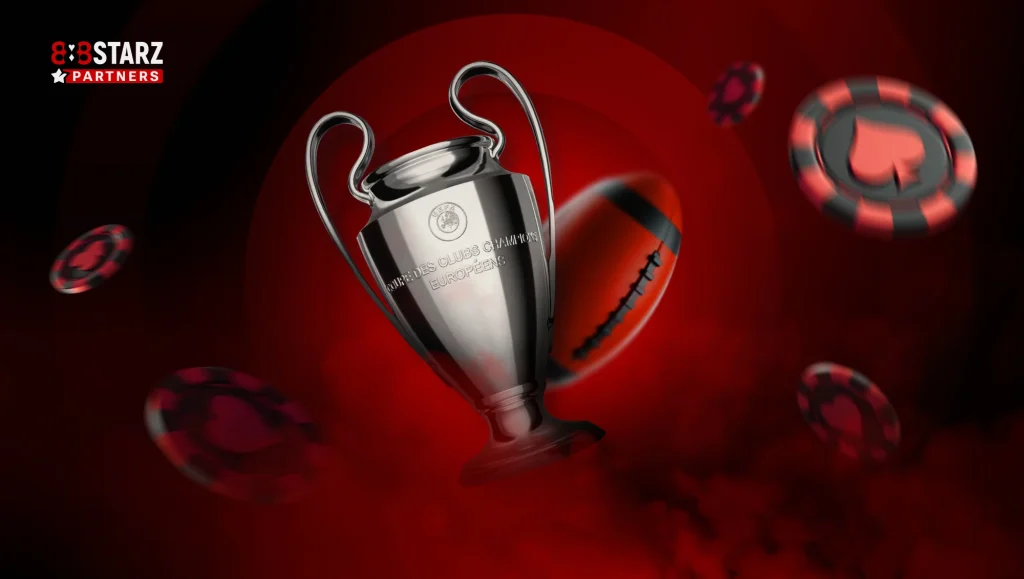
Conversion rates in 2025: Esports vs sports
When comparing conversion rates in iGaming, several points should be clarified. First, it is necessary to understand why a player clicks, makes a deposit, and remains in the product.
It should also be noted that conversion is a dynamic indicator that a poor offer, a lackluster landing page, or a minor but critical detail in the user experience can negatively impact.
Let’s examine the key stages and metrics in esports and sports to see what factors will actually determine conversion in 2025.
| Feature / Metric | Traditional Sports | Esports | Takeaway |
| Player Intent | Excited but Scattered. Driven by major events (FOMO). High urgency, but the audience is broad and less pre-qualified. | Warm and Focused. Driven by trust in a streamer or community. Lower urgency, but the audience is niche and highly pre-qualified. | Sports: Your pre-lander must filter and create urgency. Esports: Your pre-lander must reinforce the trust established by the influencer. |
| The “First 3 Seconds” on Landing | The Offer. “$500 Welcome Bonus! Bet on the Final NOW!” Clear, bold calls-to-action and prominent odds are critical. | The Face. “Join [Streamer]’s Community & Get a Bonus!” Familiar branding, game-specific imagery, and social proof are key. | Sports: Test your bonus offers relentlessly. Esports: Get custom landing pages featuring the influencer you’re working with. 888STARZ Partners can help with this. |
| Psychological Triggers | Urgency & Greed. “Don’t miss out!” “The Big Game!” “Win Big!” Taps into the desire for a quick, large payout. | Authenticity & Belonging. “The gear the pros use.” “The site my community trusts.” Taps into the desire to be part of an in-group. | Sports: Use countdown timers and highlight potential winnings. Esports: Use testimonials from community members and exclusive offer codes. |
| Typical Conversion Rate (Reg-to-FTD) | ~1-3%. The “wide net” approach. You reach millions, but only a small, interested fraction converts. Highly sensitive to event hype. | ~2-5%. The “spearfishing” approach. You reach thousands, but a larger, more trusting percentage converts. More stable year-round. | Don’t be fooled by volume. A high CR from a smaller, cheaper Esports audience can be more profitable than a low CR from a massive, expensive Sports audience. |
| Average CPA (Tier-1) | $70 – $150. You pay a premium for reaching a massive, competitive audience during peak events. | $40 – $100. You pay less because the influencer/community has done half the work of qualifying the lead for you. | Sports: Your ROI lives and dies by your campaign optimization. Esports: Your ROI depends on finding the right influencer/community partnership. |
Affiliate funnel: lead quality and CPA rates
In the affiliate funnel, costs and quality differ significantly.
- Sports: CPA rates are generally higher, ranging from $70 – $150 for a First Time Deposit (FTD) in Tier-1 GEOs. For example, at 888STARZ Partners, the average CPA rate ranges from $30 to $140. The final rate is always discussed individually and depends on your GEO and traffic source, allowing you to find the most profitable funnel. Moreover, powerful Hybrid deals, such as 35% RevShare + $80 CPA on Tier-2 GEOs, are available for trusted partners, allowing you to get both immediate profits and long-term passive income. It’s worth remembering that the cost per click (CPC) during major events can be sky-high, and you’re competing with massive brands for a vast audience.
- Esports: CPA rates are typically lower, around $40 – $100. The crucial difference is in lead quality. A user who clicks an affiliate link after watching their favorite streamer recommend a betting site is already highly qualified and “warmed up,” often leading to a better ROI despite the lower payout.
Retention and LTV differences
Let’s immediately clarify that retention and lifetime value (LTV) are different. Retention is the percentage of players who return, while LTV is the total amount of money they bring in.
An affiliate’s ability to influence these metrics depends on their strategy. If you are a media buyer who purchases traffic, then after a player registers, your influence on LTV is practically zero. All the work of retention is taken over by an incredibly complex product machine: SMS mailings, loyalty programs, bonuses, bots, and even personal VIP managers. In this case, your only leverage is to initially choose a quality product with a powerful and, importantly, proven retention system.
That is why it is vital for a media buyer to choose a partner with strong performance indicators. For example, at 888STARZ Partners, the average retention rate exceeds 50%, and player LTV can reach $1500+. This results from the work of the very “machine” that you rely on when you pour money into RevShare.
However, the game changes completely if, for example, you are a community builder who develops your blog or Telegram channel or works with influencers. Here, you don’t lose contact with your audience and retain your influence. This works exceptionally well in esports. With access to a streamer’s audience, you can push reactivation campaigns for new promos, personally increasing retention and your LTV on RevShare. This way, you work in synergy with the product, rather than just passing leads to it.
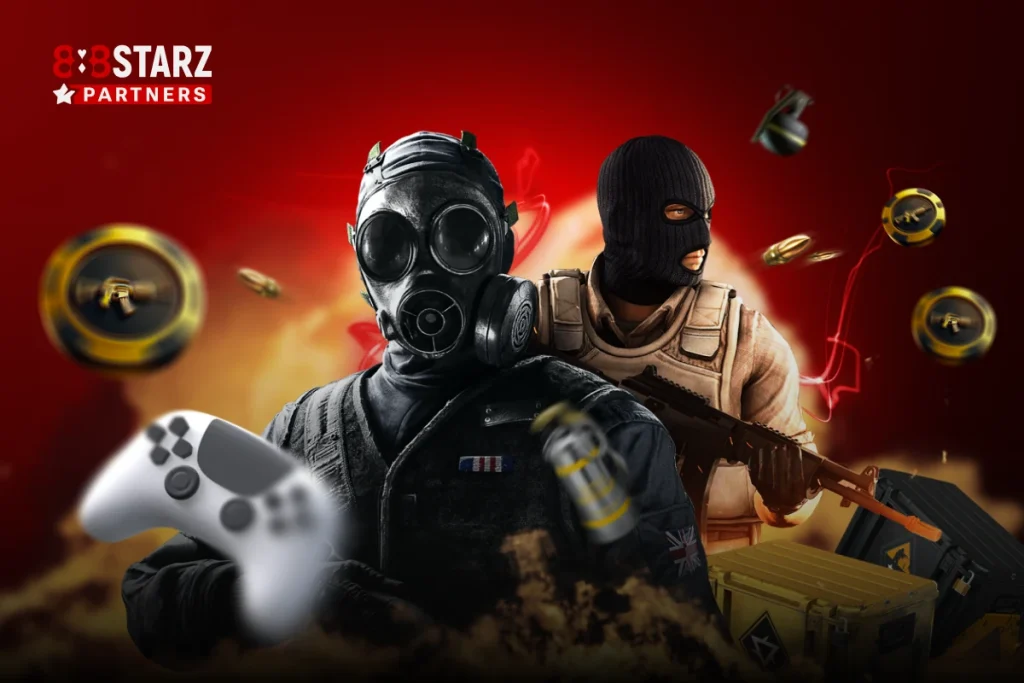
Channels used by affiliates in Esports vs sports
The success of your campaign depends on the perfect combination of the right traffic and the right offer. A professional partner always sets clear rules. For example, 888STARZ Partners creates the best conditions for affiliates with SEO traffic, understanding its high value and LTV. It also offers an up-to-date list of sources allowed for each specific offer, with unique GEO and KPI in the personal account.
Social media and streaming platforms
The leading platforms for eSports are streaming services such as YouTube, Twitch, and Discord. Success in eSports comes from native integrations, community engagement, and building genuine trust. A well-placed sponsorship on a mid-sized stream can outperform a massive, generic ad campaign.
A professional approach to working with eSports streamers is to use specialized tools for analysis and making safe deals.
- The first step is analytics. Platforms like TwitchTracker and Streams Charts allow you to filter out streamers with inflated statistics and shortlist medium-sized channels (100-1000 CCV) with the most loyal and relevant audience.
- The second step is search. After analytics, you can move on to searching and making deals through larger marketplaces, such as CreatorIQ or sponsorship platforms like StreamElements. These services also often act as intermediaries, guaranteeing the security of the deal and protecting your budget.
This approach is what distinguishes expert work from risky bets at random.
In sports, affiliates typically follow two entirely different strategic paths, where the choice depends on their main asset – a large advertising budget or an already established, loyal audience.
- The first path is a classic media buying sprint, ideal for an affiliate without their community, but with capital. In this case, you don’t need a year-round blog; you need a perfectly optimized funnel for 3-4 weeks. The strategy is to start a massive purchase of ads on Facebook or TikTok a month before a major tournament, for example, the America’s Cup, targeting a broad audience of fans in the desired GEO. The success of this approach is a high-risk, high-reward game that depends entirely on your budget, optimization skills, and the quality of the offer.
- The second path, based on a long-term asset – your community, works entirely differently. This strategy is for those who have invested time in developing a popular Telegram channel, expert blog, or SEO site. Here, your “funnel” is your reputation. You use the audience’s trust by providing analytics and betting tips (the “capper” model). When the time comes for a significant event, you can instantly mobilize your community by directly pushing an offer to them. Your profit in this case depends on the loyalty of subscribers and your authority, which leads to higher conversion from more targeted traffic.
It is essential to understand that both strategies work. The first buys attention for a specific event, and the second capitalizes on the attention already earned. Your choice depends only on what you start with – with a budget or community. Of course, a well-designed SEO and content strategy, which will be discussed in detail below, also plays an important role here.
SEO and content strategies
SEO expertise in a successful conversion strategy for eSports & Sport primarily involves creating a new page for each event. That is, you should use authoritative “hubs” to develop broad, informative “hub” pages (for example, /power-ratings-in-sport-2025/). Then you need to update these existing pages with fresh, relevant content. As we know, Google re-crawls and re-evaluates existing, trusted pages much faster than new ones.
So, an SEO strategy for eSports and sports is built on a foundation of trust through profitable content and event analytics.
SEO strategy for traditional sports. To build a foundation of trust, you should publish content on in-depth analysis, reviews of a team’s playing style, for example, with a new coach, tactical formations (e.g., “Analysis of Liverpool’s Gegenpressing System“), or transfer season reviews. These topics have long-term search value for users.
Content such as “A Beginner’s Guide to Handicap Betting” or “How to Manage Your Bankroll in Betting” also builds authority and attracts a valuable audience, mainly beginners.
Historical content, such as articles like “The 5 Greatest Upsets in World Cup History,” is essential. This type of content attracts organic traffic and valuable backlinks all year round.
As for event-based content, creating “classic articles” in the spirit of “Odds and Predictions: Manchester United vs. Arsenal” on the eve of finals or critically important matches brings in an impressive amount of traffic. As mentioned above, they should be published as updates on your authoritative hub pages for quick indexing.
Also, instead of simply predicting the winner, it is preferable to create expert content, such as “Why betting on [Player Name] to score first is valuable.” This demonstrates deep expertise and specificity.
SEO strategy for eSports. The principle is practically the same in an SEO strategy for esports, but the content is unique due to the rapidly changing world of competitive gaming. In building trust, a classic example is in-depth game guides on a hypothetical topic such as “The best settings for improving aim in Valorant.” Such content attracts players who want to improve in this cyber discipline and makes you an authoritative source.
Tournament rule analyses are considered a gold mine, as esports tournament formats change almost yearly (unlike traditional sports). Therefore, a detailed guide such as “Analyzing the new format of the VCT 2026 season” instantly becomes authoritative.
Due to the higher degree of randomness in esports, content on betting strategy guides, such as “How to find value in betting on underdogs with high odds in Dota 2,” is extremely valuable and positions you as an expert who sees opportunities that others miss.
As for event-based content, you should pay attention to the so-called “patch notes analysis” — the esports equivalent of “player injury reports.” For example, an article titled “How the latest patch in CS2 will shake up the professional meta” will potentially become relevant regarding timing and actively sought by involved players and bettors.
In eSports, you are not selling an offer, but an “advantage“; not a product, but a way to become “better or smarter”. Creating a knowledge base (guides, reviews, strategies) builds a long-term, authoritative SEO asset in the esports space.
For players, you are a “training base” to which players will return repeatedly. Such a site is much more stable and brings in more profit in the long run.
The main point is that in esports, you can occupy a unique niche of a “Trainer” and “Expert” for your audience, not just be another news aggregator. This level of trust converts many times better.
Influencer Collaborations and Community Loyalty
In Esports and traditional Sports, the influencers are the brand. A little above, we have already mentioned platforms for finding streamers and the moments when choosing them, but it is worth remembering that a successful collaboration with a streamer is, first of all, a well-agreed deal. However, the question arises: How can cooperation with an influencer become profitable, and what should we pay attention to?
1. First, you must decide on a payment method for the influencer. There are several options:
- Fix (Flat Fee). You pay a fixed price for a certain number of integrations.
Pros: predictable costs, suitable for testing.
Cons: no long-term benefit. - Only CPA / RevShare. You pay only for the result.
Pros: zero risk for you.
Cons: Most established streamers will refuse such a model from a new partner, since all the risks fall on them. - Hybrid (Expert’s Choice). You offer a small flat fee to cover the streamer’s time and effort, plus a CPA or RevShare component. This ideal model shows that you respect their work while motivating them to make a quality native integration that will bring in long-term players.
2. Next, you need to think about the integration format. Be specific here. Your contract should clearly state what you are paying for. Integration can be passive or active.
- Passive integration usually means integrating a banner under the stream, a logo on the overlay, or a command for a chatbot. Objectively, the effectiveness of such integration is low.
- Active integration is implemented into a native word-of-mouth recommendation during a stream, a separate gaming session on the platform, or even during a product unboxing. This is a highly effective and highly converting format.
3. Among other essential nuances in cooperation with an influencer is the issue of exclusivity. Here, the streamer can advertise 888STARZ Partners or mention betting on 888 site. Obtaining exclusivity, even during a conditional major tournament for several weeks, will dramatically increase your ROI.
4. Naturally, do not forget about tracking and conversion tracking. So, a unique, easy-to-remember promo code (for example, STREAMER888) in combination with a personal affiliate link from 888STARZ Partners will play a significant role in promoting your content
5. And of course, it is worth clarifying with the streamer the rights to his content, like whether he can use clips from a sponsored stream in his advertising creatives? Or how long can the 888STARZ Partners link remain in the description of their channel?
The above points should be defined from the beginning to avoid future disputes. If we draw a practical conclusion, cooperation with a streamer is often a hybrid model with a clear contract, where the format, tracking, and exclusivity are spelled out.
Remember that you are buying advertising from a streamer and investing in an affiliate with an opinion leader trusted by the community.
At 888STARZ Partners, we operate in over 100 countries, providing personalized localizations and payment solutions to help you conquer any GEO you choose.

Which vertical converts better in 2025? Comparative insights
The choice between sports and esports ultimately comes down to your fundamental approach to business. Sports are more suitable if you work as a technical marketer or media buyer who trusts data. This path requires a significant starting budget to compete in advertising auctions during major events, and the business model itself is based on short, intense “sprints” aimed at achieving a vast and rapid ROI.
Conversely, esports is the perfect choice if your strengths lie in content creation, social marketing, and community building. This strategy is a “marathon” rather than a sprint. It is based on investing time in creating a long-term, authoritative asset, such as an SEO website or a loyal community. Success here is measured by stable, growing monthly income, and scaling is achieved by expanding your content library and deepening your relationship with your audience, rather than simply increasing your advertising budget.
The RevShare model at 888STARZ Partners is perfect for this strategy. It allows you to turn the trust you build today into a source of long-term, almost passive income as you continue to earn from your referred players for months and even years.
In short, one path scales with money and data, the other with time and trust.
Key takeaways for your affiliate strategy
So, choosing between esports and sports is primarily a matter of choosing a business model that suits your capital, skill set, and, most importantly, your temperament as an affiliate.
- Choose sports if you are a technical marketer, media buyer, or analyst. Your main asset is capital, and your primary weapon is data. You think about ROAS, CR, CPC, and A/B tests. Your business model is a series of calculated “sprints”, but this does not mean you should wait only for the World Cup. Expertise lies in the ability to work with both global hype and local passion. On the one hand, this can be a large-scale campaign for the Champions League final. On the other hand, a more precise and focused “flood” for a regional championship, which has less global hype, but has an incredibly loyal and predictable core of fans.
For a competent media buyer who works with 888STARZ Partners and covers 100+ GEOs, there is no “off-season.” The sports calendar is a year-round cycle of opportunities. You can alternate sports and regions, switching from European football to a major cricket tournament in India and then to the Copa America in South America. A single jackpot does not measure your success, but rather a consistent positive ROI from strategically allocating your budget across a diverse, year-round calendar of global and regional sporting events. - Choose eSports if you are a content creator, SEO specialist, or community manager. Your main asset is time, and your primary weapon is trust. Your path is a “marathon” that can go in two key directions – creating your brand asset from scratch or masterfully partnering with those who already have it, with influencers.
In the first case, you are ready to invest your time for months or even years in creating a valuable resource – an SEO site with guides or a Telegram community. In the second case, you use your skills to build long-term, native partnerships with established streamers. In other words, here you get access to an existing loyal audience.
So, you know how to work with the community, speak the same language with the audience, understand internal memes, and value loyalty above immediate profit. Your success is measured by stable, growing income from diversified sources built on genuine trust.
If you are better at managing budgets and numbers, go into sports. If you are better at managing content and people, build a career as an affiliate in esports.
FAQ
What converts better in 2025 — esports or traditional sports offers?
A well-crafted, native campaign targeting a specific gaming community can actually have a significantly higher conversion rate than a generic sports campaign. Ultimately, sports offer a broader scale, while esports offer a more profound conversion.
How does the target audience differ between esports and sports verticals?
They are fundamentally different. The esports audience is young (18-35), tech-native, and trusts personalities over brands. The sports audience is older and broader (25-65+), more traditional in its media habits, and loyal to established teams and betting brands.
Which traffic sources work best for promoting esports affiliate programs?
The best traffic sources are those built on authenticity and community. This includes native integrations with Twitch and YouTube streamers, creating valuable evergreen content on a blog or website (SEO), and engaging directly with players in communities on Discord and Telegram.





